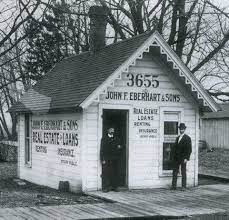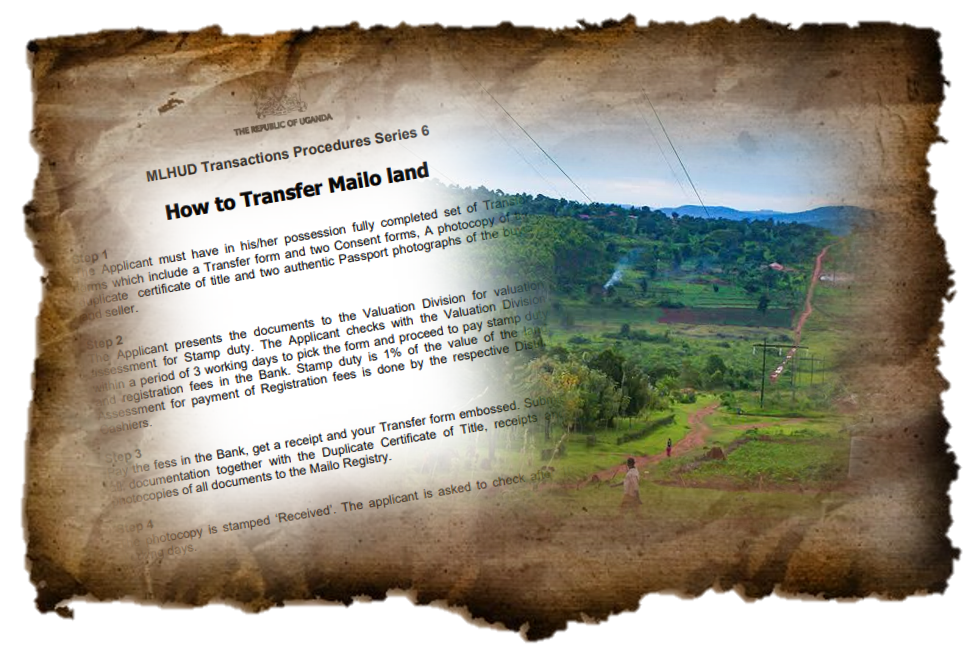For almost half of history, our ancestors moved with the four-legged food supplies of their respective areas, leaving only trace signs of their lives: a cave painting here, some stone axes there, and the odd carved trinket in the belly of a saber-toothed tiger.
Pre-Historic Living
Our ancestors abandoned the hunter-gatherer lifestyle gradually over the period spanning 30,000 B.C.E. This change was far from global, and the hunter-gatherer societies still survive in some areas of the world today. But it did mark a transition toward an agrarian society-a transition that also heralded the advent of home ownership, and REAL ESTATE.
Staking Claim
Many agrarian systems progressed like this: fertile plains were staked out and settled in a might-makes-right manner, per which those who could defend the land were the ones who kept it. Eventually, a system of tribal leaders developed , and those who had the approval of the tribe would disperse the lands, settle disputes, and require payment from all their subjects.
The shift toward more and more powerful tribal leaders culminated in a pooling of labor, along with a CEO of sorts to direct efforts. Irrigation channels were dug, strongholds were built, farming methods improved, and temples were erected. With the land improvement, populations exploded. Now, where a family of hunter-gatherers might be able to support one or two children at Best, farmers could produce several children. The increased fertility also meant greater numbers of available laborers.
The Original Protection Racket
Hunter-gatherers also followed a tribal system, but scarcity and the uncertainty of life meant that a tribe could only support two or three extended families. The amorous farmers, however, soon found that they could not name everyone in their tribe anymore. In return for the sacrifice of familiarity, people living in these small societies gained the safety of numbers.
A well-fed army easily repelled any desperate raiders. In return for this security, the people all paid homage to the Lord or king who claimed ownership of the land; this, in essence, was the first system of rent. As these farming villages grew into cities, the leading families maintained ownership by right of lineage-their ancestors had been the ones who clubbed all the other challengers senseless-thus becoming the kings, pharaohs, daimyos, and Sunday heads of other feudal dynasties.
All Hail the King
This system of labor-for-protection developed into two separate systems in most countries: taxes and tenancy. Royal families spread their wealth to friends, signing away titles and deeds to lands that allowed the holders to collect the revenues (rent) produced by the peasants living there.
On top of this rent, all the people within a ruler's realm were generally required to pay a tax. Many other demands were made by the ruling leader, such as military service-and they were grudgingly met because these rulers owned the land not only by birthright but by military might as well. Rulers could be overthrown by other rulers, and sometimes by peasants, but a new ruler would sit on the throne, and the average pleasant would rarely notice the difference.
It wasn't all bad news for the peasants, however. They were able to trade with other kingdoms and the general level of wealth increased, giving rise to a merchant class as well as specialized laborers-tradesmen-who were able to earn a living through skills other than farming. This in-turn, resulted in non-agrarian shops and houses that still paid rent and taxes to the various lords and kings, but were bought, sold, and rented among the common folk rather than by the riyal class. Richer merchants became the first common-born landlords, gaining wealth and status. These merchants didn't own the land, but they owned the houses on it.
The King Is Dead
Many aristocracies were eventually displaced-usually via displacement of an aristocrat's head from the body-by putative meritocracies: systems in which the truly best and brightest lead a nation for the good of all.
What happened instead was the creation of politics. Title lands were broken into smaller parcels and sold on a free market of sorts, but the people with the money to buy the deeds were either merchants or former aristocrats who managed to escape being shortened by revolutionary fervor. Peasants had yet to make much progress from the original farming-tribesmen of 30,000 years prior.
The Age of Machines
The industrial revolution was one of the great equalizers in human history, perhaps only matched by the invention of firearms. The effects of industry were neither positive nor negative but depended on application. The use of machined for manual labor freed many peasants for different tasks and allowed a privileged few the time for education and specialization into new fields of labor opened up by the mechanization of industry.
Cobblers, seamstresses, and cabinetmakers found that their once invaluable skill were now obsolete, leaving them to return to the land and the coal mines beneath it to try to eke out a living.
People with ambition were able to jump classes and bring some of their low-class sensibilities with them, leading to track housing for laborers and a range of products aimed at the lower classes. People were now divided into the middle class, blue-collar, white-collar, and a handful of other things. They owned houses, cars, and eventually, radios and televisions, which suggested what other things they might want to own.
Magic Mortgages
The invention of mortgages belongs to no particular country. Mortgages existed for a long time as an exclusive loan given only to the nobility. After the industrial revolution, however, the wealth of the world increased to the point where banks opened themselves to "higher-risk" mortgage loans-those made to common people. This allowed individuals to own their own homes and, if they so desired, to become landlords themselves.
It took 30,000 years, but home ownership is now open to many people. In fact, it has reached the point where people often buy too much or take out too much of a mortgage.
The freedom to own something can be a heavy brew, so it is important to practice moderation. Consuming too much debt by way of a mortgage can help you lose a house as likely as it will help you own one.




